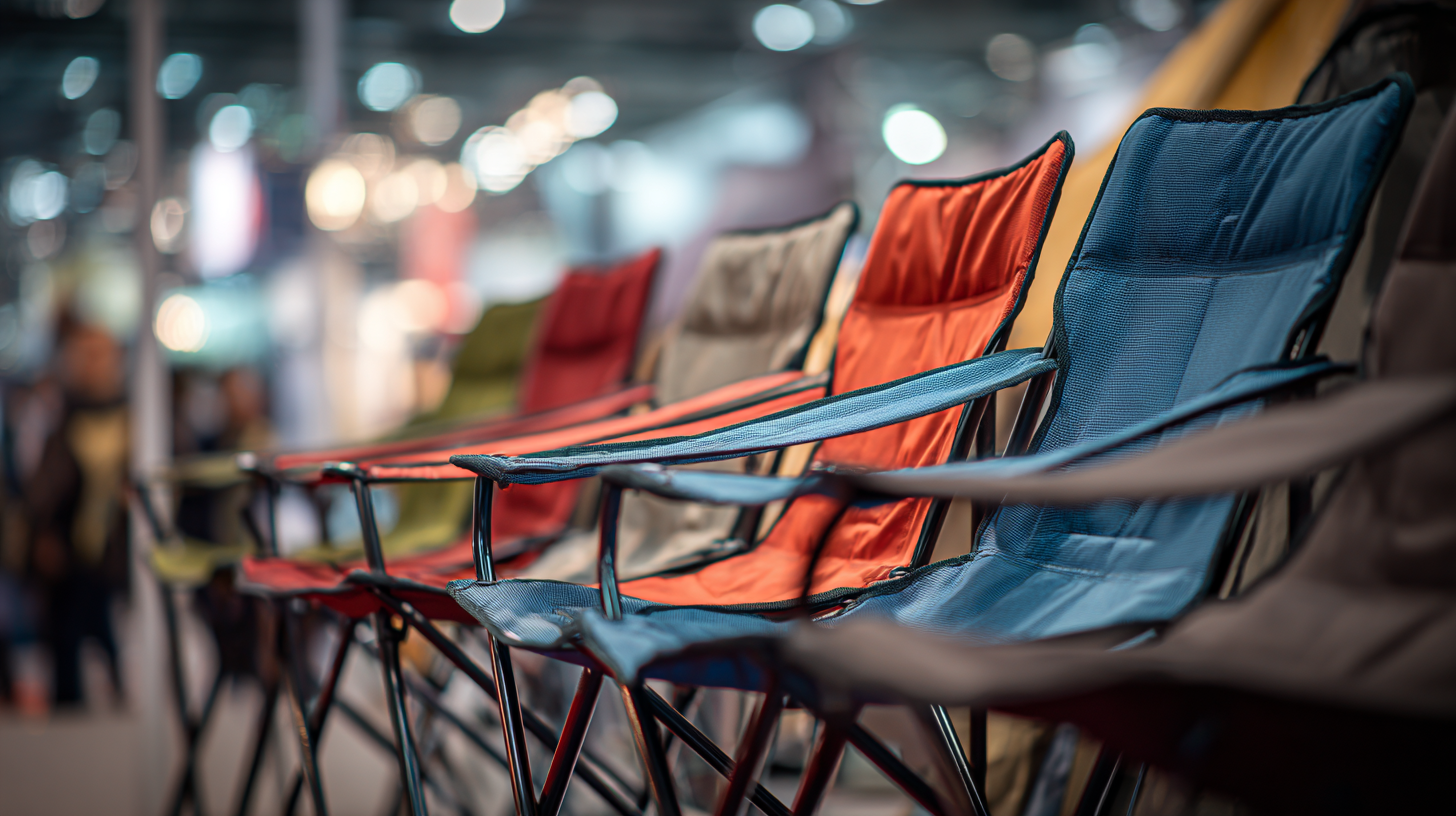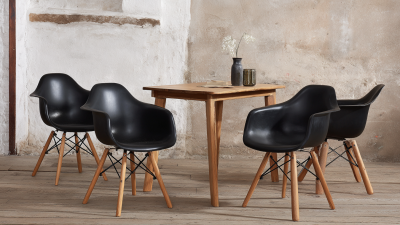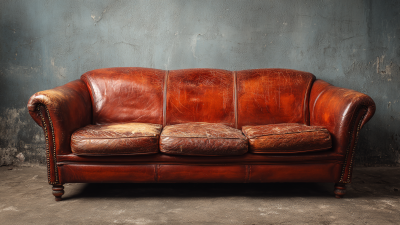Exploring the Future of Folding Chairs: Insights from the 138th Canton Fair 2025 and Industry Trends
As the 138th Canton Fair approaches in 2025, the folding chairs industry is poised for significant transformation driven by evolving consumer preferences and innovative design trends. According to a recent market analysis by Grand View Research, the global folding chair market was valued at approximately $3.1 billion in 2022, with expectations to grow at a CAGR of 5.3% over the next several years. This growth is attributed to an increasing demand for versatile, space-saving furniture solutions among urban dwellers and professionals alike. The Canton Fair serves as a pivotal platform for manufacturers and retailers to showcase cutting-edge folding chair designs, incorporating sustainable materials and ergonomic features that cater to a more health-conscious consumer base. As we explore the insights from this major trade event, it becomes crucial to analyze how these trends will shape the future of folding chairs, influencing both production strategies and market dynamics in the years ahead.

Future Innovations in Folding Chair Design Showcased at the 138th Canton Fair
 The 138th Canton Fair in 2025 has highlighted the innovative advancements in
folding chair design, showcasing a blend of functionality and aesthetics. Exhibitors presented a variety of materials and
engineering solutions that make folding chairs not only more comfortable but also visually appealing. From lightweight
aluminum frames to eco-friendly fabrics, these innovations are setting new standards in the industry. The integration
of smart technology, such as built-in charging ports and adjustable features,
reflects the demand for multi-functional furniture in contemporary living spaces.
The 138th Canton Fair in 2025 has highlighted the innovative advancements in
folding chair design, showcasing a blend of functionality and aesthetics. Exhibitors presented a variety of materials and
engineering solutions that make folding chairs not only more comfortable but also visually appealing. From lightweight
aluminum frames to eco-friendly fabrics, these innovations are setting new standards in the industry. The integration
of smart technology, such as built-in charging ports and adjustable features,
reflects the demand for multi-functional furniture in contemporary living spaces.
Tips: When considering new folding chair designs for your space, look for options
that combine durability with style. Examine the chair's ability
to adapt to different environments, whether for casual outdoor use or formal indoor settings. Additionally, prioritize
models that offer ergonomic support, ensuring comfort without sacrificing convenience.
The future of folding chairs is also leaning towards sustainability. Many manufacturers are opting for recycled materials
and low-impact production techniques, which not only reduce environmental footprints but also cater to the
eco-conscious consumer. As these trends evolve, designers are challenged to
innovate further, ensuring folding chairs continue to meet the diverse needs of users while embracing a greener approach.
Sustainable Materials and Eco-Friendly Solutions in Folding Chair Manufacturing
The evolution of folding chairs has been significantly influenced by the growing emphasis on sustainability and eco-friendly practices. At the 138th Canton Fair 2025, manufacturers showcased innovative designs that not only prioritize portability and comfort but also utilize sustainable materials. Bamboo, recycled plastics, and organic fabrics emerged as popular choices, reflecting an industry commitment to reducing environmental impact. These materials not only enhance the sustainability quotient of folding chairs but also appeal to consumers who are increasingly environmentally conscious.
In addition to raw materials, the integration of eco-friendly solutions in manufacturing processes is shaping the future of the folding chair industry. Techniques such as water-based adhesives, low-emission finishes, and energy-efficient production methods were highlighted by various exhibitors. As brands continue to innovate, the focus on durability and recyclability ensures that folding chairs can maintain their functionality while aligning with a sustainable ethos. This fusion of practicality and environmental responsibility is set to redefine consumer expectations and influence future market trends.
Market Trends and Consumer Preferences Shaping Folding Chair Developments
The folding chair market is poised for significant growth, driven by changing consumer preferences and lifestyle trends. As urban living spaces shrink and the demand for multifunctional furniture rises, the folding furniture sector is projected to exceed $7 billion by 2030. The growth in the global furniture rental market, estimated to reach $904.7 billion in 2025, further reflects the increasing popularity of space-saving solutions, particularly among younger generations who favor mobility and flexibility in their living arrangements.
Tips: When selecting folding chairs, consider their functionality, design, and durability. Opt for models that can seamlessly blend with your home aesthetic while remaining lightweight and easy to store.
Additionally, the rising trend of outdoor activities, such as camping, has amplified the demand for portable and versatile seating options. The camping economy in China is experiencing rapid development, highlighting consumers' preference for products that enhance their outdoor experiences. As manufacturers respond to these trends, advancements in materials and ergonomic designs will likely influence folding chair innovations in the coming years.
Tips: Look for folding chairs with weather-resistant materials for outdoor use and ergonomic designs to ensure comfort during extended periods.
Exploring the Future of Folding Chairs: Insights from the 138th Canton Fair 2025 and Industry Trends
| Feature | 2025 Trend | Consumer Preference | Market Impact |
|---|---|---|---|
| Materials Used | Sustainable and Lightweight | Eco-friendly options and durability | Increased demand for sustainable products |
| Design Innovation | Multi-functional and Space-saving | Versatility in small living spaces | Higher sales in urban areas |
| Technology Integration | Smart Features (e.g., built-in charging ports) | Tech-savvy consumers | Attracts younger demographics |
| Comfort Level | Ergonomic designs with better support | Emphasis on comfort and health | Increased sales in home and outdoor markets |
| Price Point | Mid-range with value-added features | Affordability without compromising quality | Broadening market appeal |
Technological Advancements Influencing Functionality and Usability of Folding Chairs
The evolution of folding chairs has been significantly influenced by recent technological advancements, shaping their functionality and usability for diverse applications. According to a report by MarketsandMarkets, the global folding furniture market is projected to reach USD 6.9 billion by 2027, reflecting a growing demand for innovative designs that blend convenience with aesthetics. At the 138th Canton Fair in 2025, manufacturers showcased cutting-edge features like integrated Bluetooth speakers and USB charging ports, transforming traditional folding chairs into multifunctional furniture.
In addition to technology, sustainability has become a crucial factor in the folding chair industry. The trend towards eco-friendly materials has prompted companies to explore biodegradable plastics and reclaimed wood, addressing consumer preferences for environmentally responsible products. Data from Smithers Pira indicates that the demand for sustainable furniture is expected to grow at a rate of 9.3% annually through 2028. These advancements not only enhance the usability of folding chairs but also cater to a modern clientele seeking style, functionality, and a commitment to sustainability in their choices.

Competitive Landscape: Key Players and Strategies in the Folding Chair Market
The competitive landscape of the folding chair market reflects a dynamic shift driven by evolving consumer preferences and increasing urbanization. According to recent analysis, the folding furniture market is projected to surpass USD 7 billion by 2030, fueled by the rising demand for space-saving solutions amidst smaller living spaces. This surge indicates a significant opportunity for key players to innovate and capture market share within this growing segment.
Leading manufacturers are shifting their strategies to focus on multifunctional and aesthetically pleasing designs that appeal to urban dwellers. As urban living trends continue to dominate, the folding chair segment is likely to witness a wave of innovation. Market insights reveal that consumers are seeking versatility and portability in furniture, leading to the emergence of products that cater to both comfort and space efficiency. Industry leaders who can effectively adapt to these trends may find themselves well-positioned to thrive in this competitive market landscape.
Related Posts
-

How to Choose the Perfect Folding Chairs for Every Outdoor Event
-

What is the Best Material for Bed Frames and Why It Matters
-

Navigating Import and Export Certifications for Sourcing the Best Black Dining Chairs Globally
-

Navigating Import and Export Certifications for the Best Chaise Lounge in Global Markets
-

Unlocking the Secrets to Finding Top Suppliers for Best Bedroom Sets in Global Markets
-

Common Issues with Choosing the Best Leather Couch for Your Business

